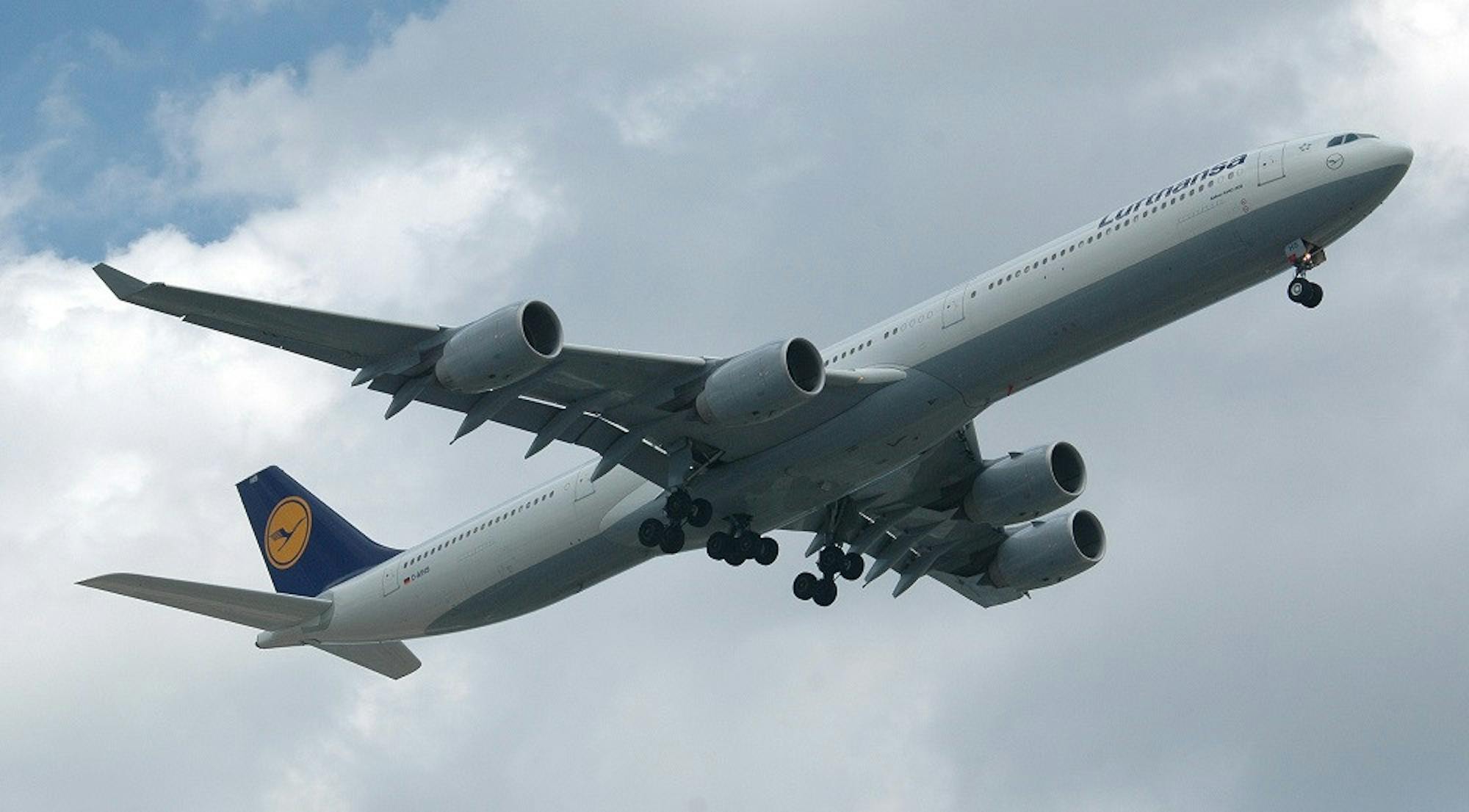
Doug Flickr
Raging flames billowing from the Twin Towers. An apocalyptic mushroom cloud and ash lingering above on an otherwise pristine-weathered day. Blank stares. Dashing fire engines and racing police cars. The nation’s largest city ground to a screeching halt. Such are the images that many Americans associate with “terrorism”.
September 11, 2001 undoubtedly left a permanent stain within the fabric of our nation, and defined a clear (if misleading) picture of what terrorism looks like in the 21st century. However, since 9/11, terrorists have increasingly employed a variety of methods to achieve their aims, challenging this traditional, one-dimensional definition of terror that hinges on stale and inaccurate stereotypes. A recent wave of online threats — Twitter terror — directed against airlines represents a new and emerging challenge with which aviation leaders must grapple.
According to CNN, airlines have received more than 50 online threats (most of which are conveyed via Twitter) since January 17, grounding many planes nationwide, including several locally in Atlanta. None of these threats proved credible, and searches for explosives aboard the targeted aircraft have continually turned up empty.
But false threats still inflict a significant burden on the airline industry, even while evading a potential catastrophe. Landing and searching a plane imposes a financial toll, inconveniences passengers and stirs a fear (even if only temporary) regarding the safety of flying, historically among the safest modes of transportation.
“Aircraft[s] have to be turned around or landed at the nearest location,” according to aviation security expert Jeff Price. “Thousands of dollars are lost every minute that that plane is unexpectedly delayed.”
With such drastic loss of life at stake, few would debate the need to exercise caution in such situations. Airlines will always err on the side of safety, given the potentially disastrous ramifications and backlash of failing to respond appropriately. But, to minimize the costs to themselves, their passengers and to society, airlines should also only take action against threats of substantial credence. In other words, what exactly constitutes an “appropriate” response?
Online threats pose an especially difficult challenge due to their direction specifically toward an airline, which has less ability to evaluate credibility than would a federal agency such as the FBI. In addition, the public nature of social media, which exposes the threat in the open for all to see, often compels airlines to respond in an overly cautious manner.
Despite the inclination to respond aggressively, though, online threats often carry insubstantial merit. Douglas Laird, former security director at Northwest Airlines, commented on the rarity of viable danger in these instances: “In the history of aviation sabotage, I don’t believe there’s ever been a threat called in where there’s actually been a bomb,” he claimed.
Nevertheless, this recent flood of threats encourages a broad re-evaluation of aviation security, and specifically its preparedness to handle a relatively new dimension of terrorism. A security system characterized by otherwise strong measures would mitigate the risk online threats pose (even before instituting means to address them directly), since they would be unable to carry out their doom-laden claims.
Despite the negative media attention surrounding three recent disasters (MH 370, MH 17 and QZ 8501) in the Southeast Asia region, air travel generally boasts a vibrant safety reputation, especially in countries such as the United States. As a result largely of tightened security procedures — including scrutinous inspection of passengers and reinforced cockpit doors — following 9/11, combined with a more attentive traveling population likely to intervene in the event of a hijacking, carrying larger weapons aboard and successfully taking over a commercial flight is nearly impossible.
But two crucial systemic vulnerabilities remain: unguarded employee access to secured areas and improvised explosive devices (IED’s), which can sometimes still evade detection.
Airport employees possessing Secure Identification Display Area (SIDA) badges are granted access to highly sterile areas, including the ramp which houses the aircraft. Furthermore, as a way of minimizing costs, these employees are usually allowed to enter work without first clearing security screening themselves. Although every badge holder must pass a rigorous background check and FBI fingerprinting prior to obtaining his or her badge, a clean past record represents a poor indicator of danger (or lack thereof), as indicated by a recent incident in Atlanta in which two Delta employees abused their privileges to smuggle loaded guns (including AK-47’s) into secure areas, load them on flights and later sell them in New York. Requiring personal screening of employees would correct a gaping flaw in security, yet would add only “pennies” to the cost of an airline ticket, Senator Charles Schumer (D) argues.
With consolidation overtaking the industry, resulting in concentrated, strengthened fortress hubs for the remaining legacy carriers, it is more imperative than ever to secure our nation’s airports, especially its dominant ones where a misstep could lead to disaster.
In addition, while Transportation Security Administration (TSA) screeners have proven effective at detecting large weapons (2,212 guns, a record number, were seized at airports nationwide in 2014), many small explosives still pass under the radar. On Christmas Day of 2009, Umar Farouk Abdulmutallab (infamously known as the “underwear bomber”) successfully dodged several layers of security with small explosives that he assembled and ignited onboard Northwest Airlines Flight 253.
While unlikely to result in destruction on the scale of 9/11, IED’s still wield the capability to destroy a commercial flight, possibly killing hundreds of lives. Abdulmutallab’s attack luckily failed to fully down the plane, but illustrates a soft spot in aviation security that others could still exploit.
Screeners often fail to notice such devices not because of an incapability to detect them, but because of a misguided approach designed to eradicate all potentially dangerous items (including small knives and harmless liquids) from the airport.
Modern security, rather than aiming to eliminate all potential danger, should attempt to secure airports to the standard of other public venues. This means directing focus toward items that could bring down an entire airplane and away from items that might result in individual-scale harm.
The TSA also mistakenly devotes an equal amount of attention to all airline passengers, implicitly assuming that all fliers represent equal risks. More progress has already been demonstrated on this front, as it began offering selected passengers who are deemed “low-risk” expedited screenings in 2011 via its Precheck program (which was later opened to public application in 2013). Devoting less attention to known fliers (who must clear a rigorous background check like airport employees) allows for the reallocation of resources to travelers for which less is known. Screening travelers in proportion to the threats they pose while still mandating a consistent (albeit less intensive) baseline screening demonstrates a far more coherent philosophy to security.
Furthermore, Precheck bolsters security without falling victim to the dominant terrorist stereotype, instead relying on self-selection and an entirely impersonal computer-generated algorithm to select those to receive its benefits.
Finally, as a more immediate remedy for the burgeoning trend of online threats, the airlines and the FBI must communicate more fluidly to assess the validity of threats. Social media, currently experiencing rampant growth, is here to stay, and as such these type of threats will not vanish entirely. As noted above, directing hostility specifically toward an airline places it under the spotlight to respond immediately, even though it may not have all the necessary information to respond appropriately within its grasp. The FBI is far better situated to analyze the credence of threats, but currently operates relatively independently of the airlines. The airlines and the FBI should cooperate more heavily to avoid incurring unnecessary costs in an era of cyber-terrorism.
Many probably remember the Ebola outbreak that occurred in late 2014, and the widespread hysteria and fear of flying that resulted. While airlines are hardly able to control the spread of diseases such as Ebola, they maintain full control over their reactions and responses to terrorist threats. While social media’s function as a weapon represents a new development, its degree of impact ultimately rests on how airlines and the security forces that already protect our nation choose to respond.
Alex McIntyre is a College freshmen from Dallas, Texas.





